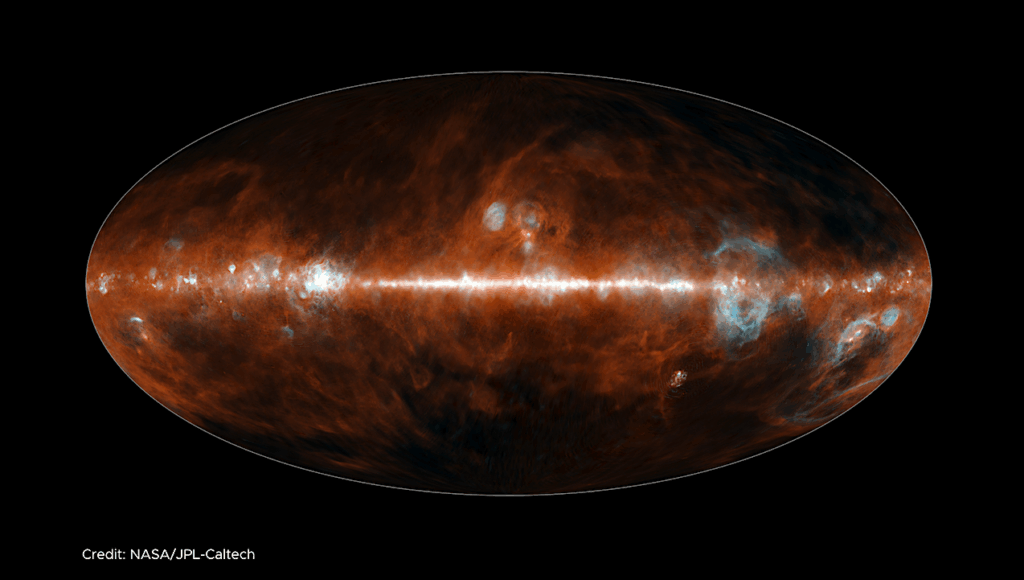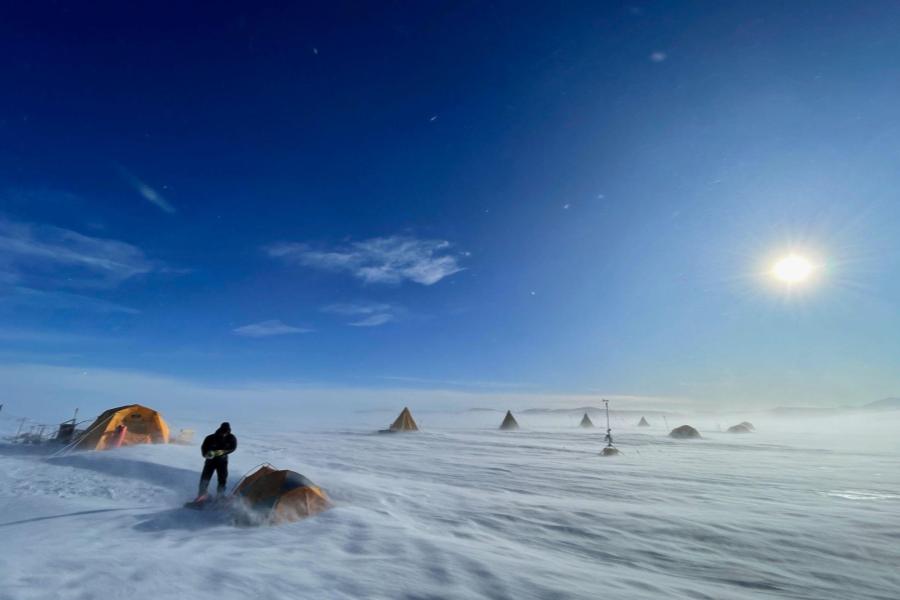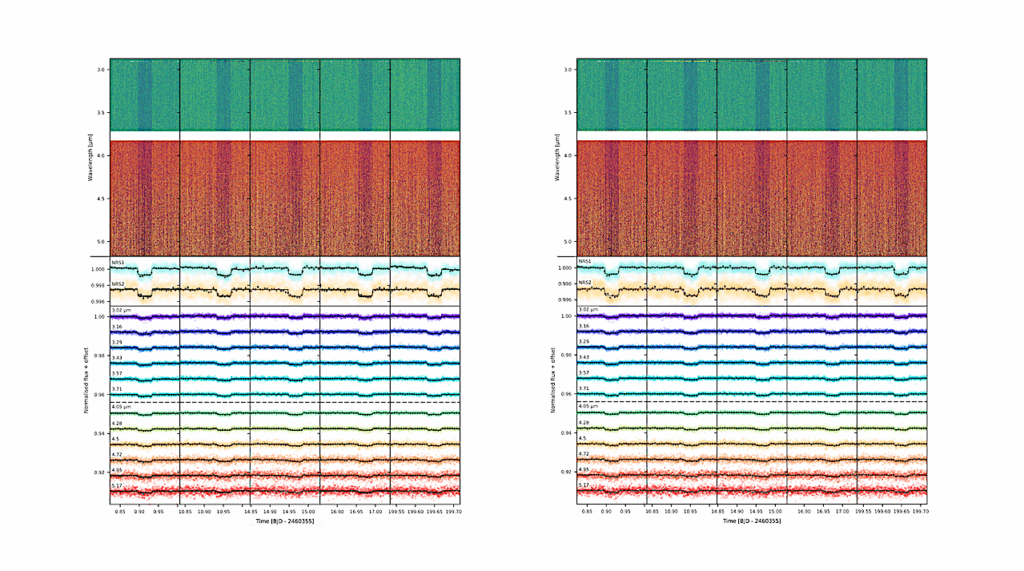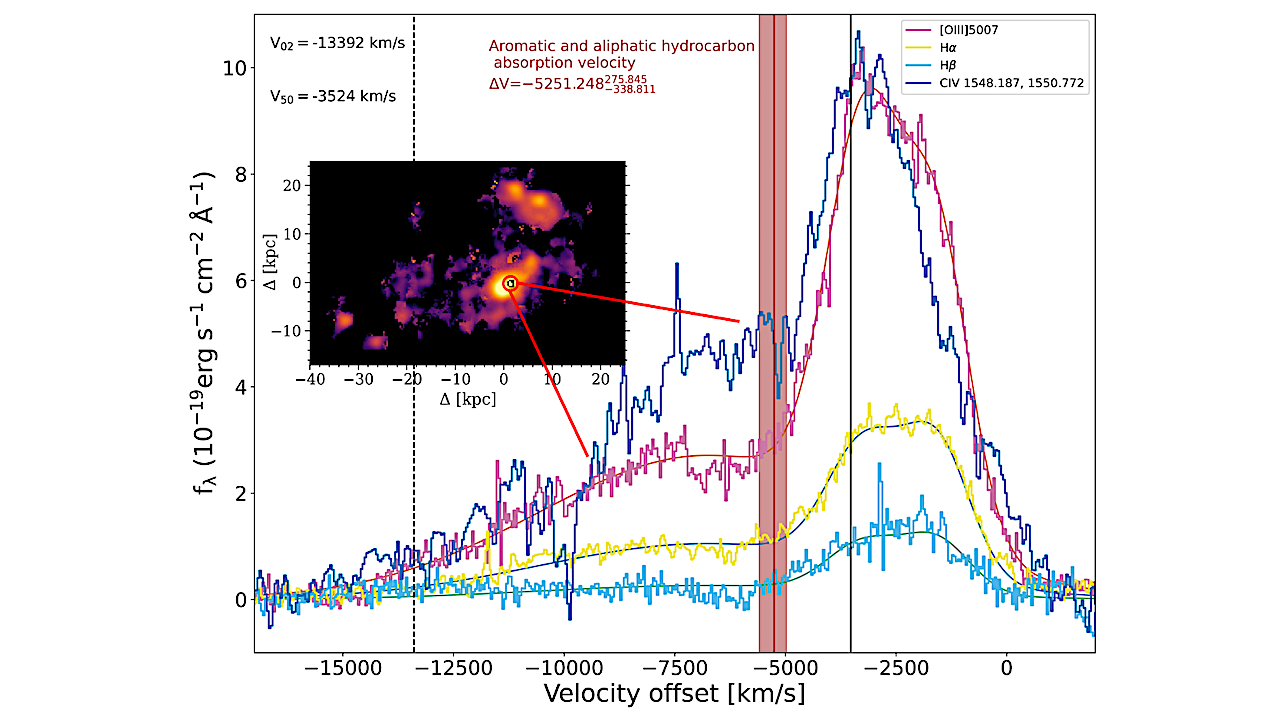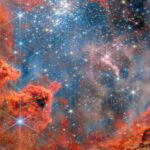Now Reading: Hubble Reveals Complex Multi-scale Structure In The Edge-on Protoplanetary Disk IRAS 23077+6707
-
01
Hubble Reveals Complex Multi-scale Structure In The Edge-on Protoplanetary Disk IRAS 23077+6707
Hubble Reveals Complex Multi-scale Structure In The Edge-on Protoplanetary Disk IRAS 23077+6707

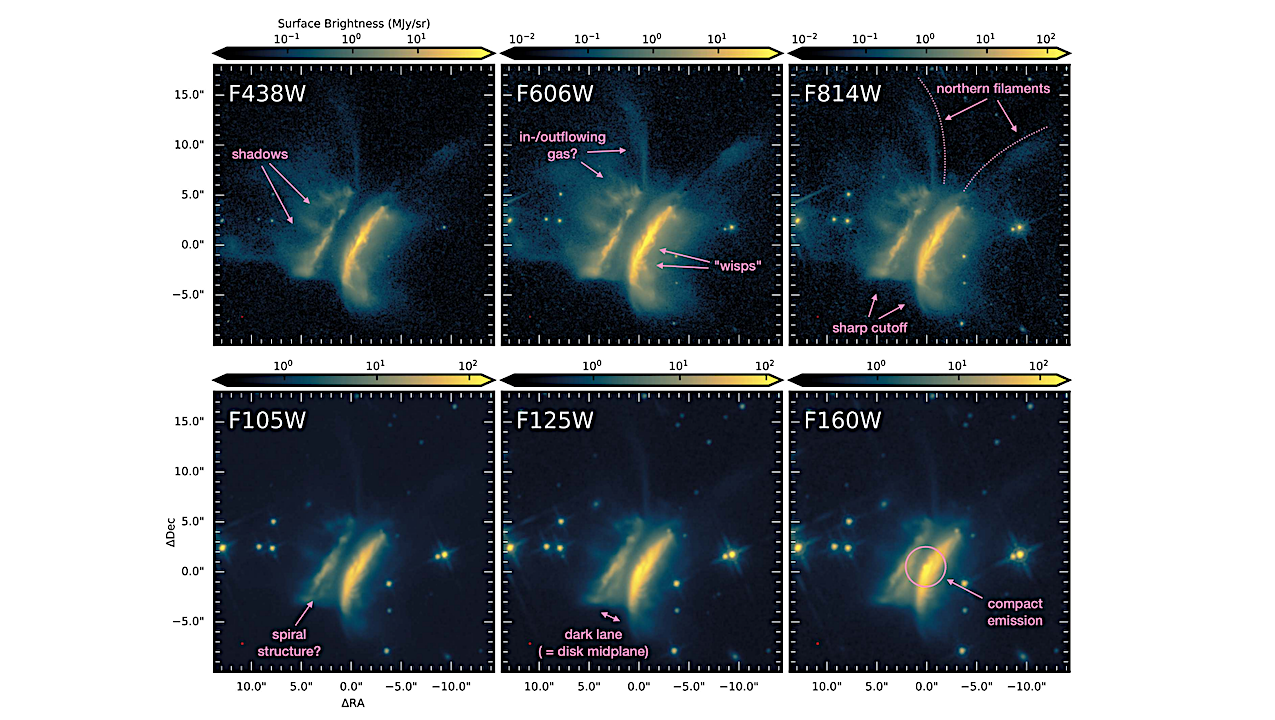
Image gallery of all HST observations of IRAS23077. The top row shows images taken with the WFC3/UVIS filters F438W, F606W, and F814W, while the bottom row shows images taken with the WFC3/IR filters F105W, F125W, and F160W. The respective PSF FWHMs are shown as red circles in the lower left corners. All images are centered slightly offset from IRAS23077’s nominal sky position to capture the full extent of the disk and the two northern filaments. North is up and east is to the left in all panels. Major features identified in the HST images are annotated and are discussed in more detail in §3. — astro-ph.EP
We present high-resolution (<0.1″) Hubble Space Telescope (HST)/Wide Field Camera 3 (WFC3) imaging of the near edge-on (i~80 deg) protoplanetary disk IRAS 23077+6707 (“Dracula’s Chivito”) obtained across six broadband filters spanning 0.4-1.6 microns.
These observations unveil the scattered light from this unusually large disk (~14″, or ~4200 au at 300 pc) in remarkable detail, revealing a rich tapestry of substructure, including brightness asymmetries and signatures of dynamical activity. Extended filaments are detected extending ~10″ from the northern edges of both nebulae, while no comparable southern features are observed.
In addition to large-scale asymmetries, the disk exhibits prominent wispy features that extend well above the midplane and are visible in all filters, suggesting a complex, possibly turbulent outer disk atmosphere shaped by infall, dynamical stirring, or gravitational instability. The central dark lane narrows from optical to near-IR wavelengths, and high-resolution millimeter data reveal compact midplane emission.
Although our radiative transfer simulations show that the current data cannot yet distinguish between dust-settling and no-settling scenarios, they underscore the need for deeper observations of this unique system. IRAS 23077+6707 thus represents a rare and valuable laboratory for studying the vertical structure, asymmetries, and evolutionary state of protoplanetary disks.
Kristina Monsch, Joshua B. Lovell, Karl R. Stapelfeldt, Sean M. Andrews, Ammar Bayyari, Alice S. Booth, Adolfo S. Carvalho, John H. Debes, Jeremy J. Drake, Joshua W. J. Earley, Cecilia Garraffo, Garrett K. Keating, Michael L. Sitko, David J. Wilner
Comments: revised manuscript submitted to ApJ on October 13, 2025
Subjects: Earth and Planetary Astrophysics (astro-ph.EP); Solar and Stellar Astrophysics (astro-ph.SR)
Cite as: arXiv:2510.11819 [astro-ph.EP] (or arXiv:2510.11819v1 [astro-ph.EP] for this version)
https://doi.org/10.48550/arXiv.2510.11819
Focus to learn more
Submission history
From: Kristina Monsch
[v1] Mon, 13 Oct 2025 18:15:46 UTC (7,930 KB)
https://arxiv.org/abs/2510.11819
Astrobiology, exoplanet,
Stay Informed With the Latest & Most Important News
-
 01From Polymerization-Enabled Folding and Assembly to Chemical Evolution: Key Processes for Emergence of Functional Polymers in the Origin of Life
01From Polymerization-Enabled Folding and Assembly to Chemical Evolution: Key Processes for Emergence of Functional Polymers in the Origin of Life -
 02Panasonic Leica Summilux DG 15mm f/1.7 ASPH review
02Panasonic Leica Summilux DG 15mm f/1.7 ASPH review -
 03How New NASA, India Earth Satellite NISAR Will See Earth
03How New NASA, India Earth Satellite NISAR Will See Earth -
 04And Thus Begins A New Year For Life On Earth
04And Thus Begins A New Year For Life On Earth -
 05Astronomy Activation Ambassadors: A New Era
05Astronomy Activation Ambassadors: A New Era -
06SpaceX launch surge helps set new global launch record in 2024
-
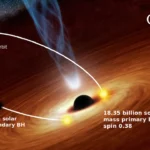 07Two Black Holes Observed Circling Each Other for the First Time
07Two Black Holes Observed Circling Each Other for the First Time












